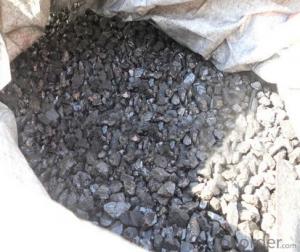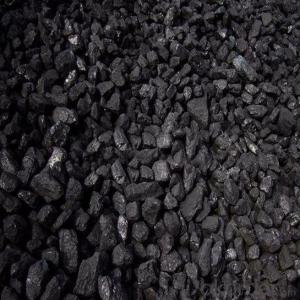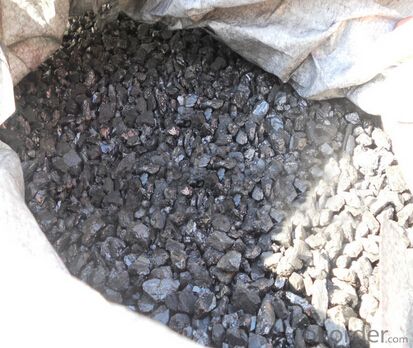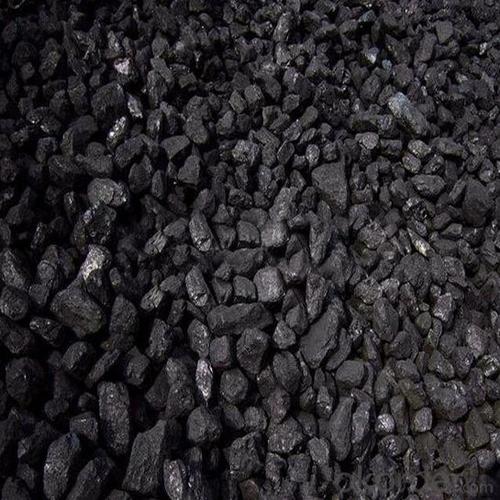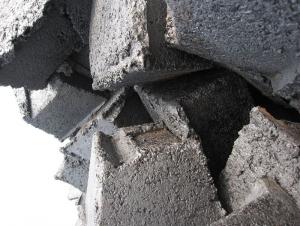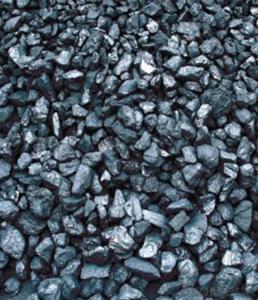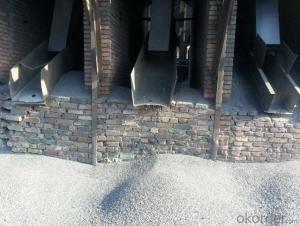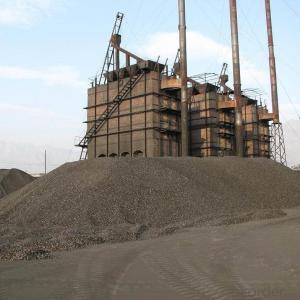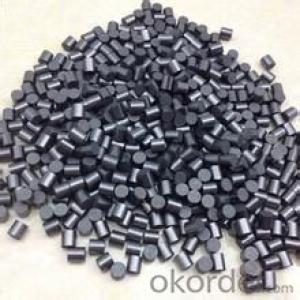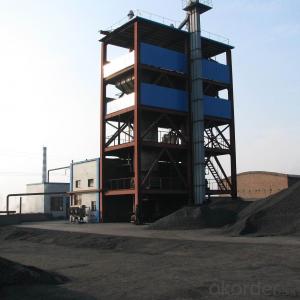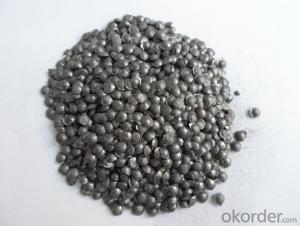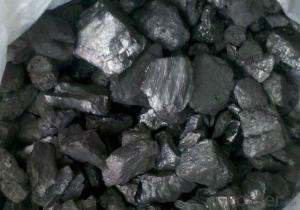Recarburizer for steelmaking High Carbon Low Sulphur For Metals Casting
- Loading Port:
- Dalian
- Payment Terms:
- TT OR LC
- Min Order Qty:
- 10 m.t
- Supply Capability:
- 500000 m.t/month
OKorder Service Pledge
Quality Product, Order Online Tracking, Timely Delivery
OKorder Financial Service
Credit Rating, Credit Services, Credit Purchasing
You Might Also Like
Specifications of Recarburizer for Steelmaking:
As an ideal carbon additive and intermediate reactor
it has been widely used in different indust
Recarburizer for steelmaking
- F.C.: 90%min
ASH: 8%max
V.M.: 2%max
S: 0.5%max
MOI: 1%max
- F.C.: 93%min
ASH: 6%max
V.M.: 1%max
S: 0.5%max
MOI: 1%max
- F.C.: 95%min
ASH: 4%max
V.M.: 1%max
S: 0.5%max
MOI: 1%max
We also can supply the size is as customers' requirements.
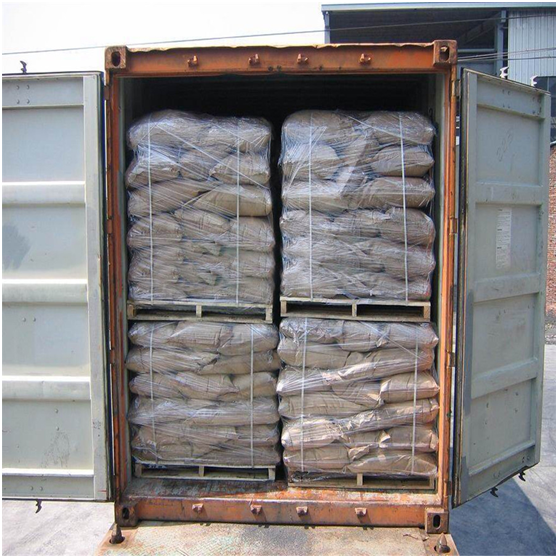
- Q: What are the impacts of carbon emissions on the stability of polar ice caps?
- Carbon emissions have significant impacts on the stability of polar ice caps. The increased concentration of carbon dioxide in the atmosphere, primarily due to human activities, leads to global warming. This rise in temperature causes the polar ice caps to melt at an accelerated rate. As a result, the ice caps shrink, leading to rising sea levels and increased coastal flooding. The loss of ice also disrupts ecosystems and threatens the survival of various species, such as polar bears and seals, which depend on the ice for their habitat and food sources. Overall, carbon emissions play a major role in destabilizing the polar ice caps and pose grave consequences for both the environment and human populations.
- Q: Yes, I have a weapon, want to strengthen 11, said to be advanced furnace rock carbon, do not know how to get, look at the prawns pointing
- Pro, tell you an unfortunate news, out of the eighty furnace rock carbon, old horse recycling, burning their own boilers, and now we strengthen the use of colorless small crystal block, that is, the colorless small crystal block instead of the original furnace rock carbon.
- Q: What is carbon sequestration and how does it work?
- Carbon sequestration refers to the process of capturing and storing carbon dioxide (CO2) from the atmosphere to mitigate climate change. It works by removing CO2 emissions either directly from the source, such as power plants or industrial facilities, or indirectly by planting trees and restoring ecosystems that naturally absorb CO2. The captured CO2 is then stored underground, in depleted oil and gas fields, deep saline aquifers, or through mineralization processes. By reducing the amount of CO2 in the atmosphere, carbon sequestration helps to reduce greenhouse gas levels and slow the progression of global warming.
- Q: What are the consequences of increased carbon emissions on vulnerable communities?
- Increased carbon emissions have severe consequences on vulnerable communities. Firstly, these communities often lack the resources and infrastructure to adapt to and mitigate the effects of climate change. As carbon emissions contribute to global warming, vulnerable communities are more likely to experience extreme weather events such as hurricanes, floods, and heatwaves. These events can result in displacement, loss of homes, and even loss of lives, disproportionately impacting those who are already marginalized. Furthermore, increased carbon emissions contribute to air pollution, which poses significant health risks to vulnerable communities. People living in low-income areas often reside near industrial plants or highways with high levels of emissions, leading to an increased risk of respiratory diseases, cardiovascular problems, and other health issues. Children, the elderly, and individuals with pre-existing health conditions are particularly vulnerable. The consequences of increased carbon emissions also extend to food security. Climate change affects agriculture and alters growing seasons, leading to reduced crop yields and food shortages. Vulnerable communities heavily reliant on subsistence farming or areas prone to droughts or floods face the risk of malnutrition and hunger. This exacerbates existing inequalities and can lead to social unrest and economic instability. In addition, vulnerable communities often rely on natural resources for their livelihoods, such as fishing, forestry, or tourism. The negative impacts of carbon emissions, like ocean acidification and coral bleaching, threaten these industries, resulting in job losses and economic decline. This further perpetuates the cycle of poverty and socio-economic vulnerability. Ultimately, increased carbon emissions disproportionately harm vulnerable communities by amplifying existing inequalities and exacerbating the challenges they face. It is crucial to address these consequences through climate mitigation efforts, adaptation strategies, and support for sustainable development.
- Q: What are the effects of carbon emissions on the stability of wetlands?
- The stability of wetlands is significantly impacted by carbon emissions. One of the main consequences is the disruption of the hydrological cycle, which can disturb the delicate balance of water levels in wetland ecosystems. The increased release of carbon emissions contributes to climate change and global warming, resulting in higher temperatures and changed patterns of precipitation. These alterations can lead to more frequent and severe droughts, floods, and storms, negatively affecting the stability of wetlands. Moreover, elevated levels of carbon dioxide also influence the vegetation in wetlands. Excess carbon dioxide can stimulate the growth of specific plant species, causing an imbalance in the wetland ecosystem. This imbalance can lead to the dominance of invasive species, which outcompete native plants and disrupt the natural biodiversity of the wetland. Consequently, the stability of the wetland is impacted as it relies on a diverse range of plant species to support the intricate web of life within it. Additionally, carbon emissions contribute to the acidification of water bodies, including wetlands. Increased carbon dioxide dissolves in water, forming carbonic acid, which lowers the pH of the water. Acidic conditions can be harmful to the survival of many wetland species, including plants, amphibians, fish, and invertebrates. The acidification of water can also result in the release of toxic metals and other pollutants from surrounding soils, further compromising the stability and health of wetland ecosystems. Lastly, carbon emissions contribute to the rise of sea levels due to the melting of polar ice caps and expansion of ocean waters. This poses a significant threat to coastal wetlands, which are particularly vulnerable to sea-level rise. As sea levels increase, there is a risk of saltwater intrusion, leading to the degradation and loss of freshwater wetlands. This loss can cause the displacement or extinction of numerous plant and animal species that depend on these ecosystems, ultimately destabilizing the wetland. In conclusion, the stability of wetlands is profoundly impacted by carbon emissions. From the disruption of the hydrological cycle and alteration of vegetation composition to the acidification of water and sea-level rise, these emissions pose a significant threat to the health and integrity of wetland ecosystems. It is essential to reduce carbon emissions and implement measures to protect and restore wetlands to ensure their stability and preserve the invaluable services they provide.
- Q: Why are biological molecules carbon based molecular aggregates?
- Because living things are living organisms, most of them consist of organic compounds, which are carbon compounds, and carbon chains are the main body
- Q: What is the relationship between carbon emissions and deforestation?
- The relationship between carbon emissions and deforestation is closely intertwined. Deforestation refers to the permanent removal of trees and vegetation in forests, usually to make way for agricultural land, urban development, or logging. This process releases large amounts of carbon dioxide (CO2) into the atmosphere, contributing to greenhouse gas emissions and climate change. Trees play a crucial role in mitigating climate change as they absorb CO2 from the atmosphere through photosynthesis and store it in their tissues. When forests are cleared, this carbon storage capacity is lost, and the carbon previously stored in trees is released back into the atmosphere. Deforestation is estimated to be responsible for around 10% of global greenhouse gas emissions. Furthermore, the burning of forests, a common practice during deforestation, also contributes to carbon emissions. When trees are burned, the stored carbon is released as CO2, exacerbating the greenhouse effect. This is particularly significant in tropical regions where deforestation is prevalent, such as the Amazon rainforest. Conversely, reducing deforestation and promoting reforestation can help mitigate carbon emissions. By preserving existing forests and planting new trees, we can enhance carbon sequestration and reduce the amount of CO2 in the atmosphere. Forest conservation and restoration efforts are crucial components of global climate change strategies, as they not only help combat climate change but also preserve biodiversity and provide vital ecosystem services. In conclusion, the relationship between carbon emissions and deforestation is clear: deforestation leads to increased carbon emissions, while forest conservation and reforestation efforts help reduce carbon dioxide levels in the atmosphere. It is essential to prioritize sustainable land-use practices and support initiatives that protect and restore forests to mitigate climate change effectively.
- Q: What are the effects of carbon emissions on the stability of peatlands?
- Carbon emissions have significant effects on the stability of peatlands. Increased levels of carbon dioxide in the atmosphere contribute to global warming, which in turn accelerates the decomposition of organic matter in peatlands. This decomposition releases even more carbon dioxide, creating a positive feedback loop that further exacerbates climate change. Additionally, rising temperatures and changing precipitation patterns can lead to the drying out of peatlands, making them more prone to wildfires. These fires release massive amounts of carbon dioxide into the atmosphere, further contributing to climate change. Overall, carbon emissions threaten the stability of peatlands by accelerating their degradation and releasing large amounts of greenhouse gases.
- Q: What does carbon burning mean?
- Put the burning carbon under the iron plate and make a copy of it on the iron plate, that is, carbon burning!
- Q: What is carbon dating?
- The determination of the age of organic artifacts, such as ancient human remains or archaeological objects, is made possible through the utilization of carbon dating, a scientific method. This method relies upon the presence of a small quantity of radioactive carbon-14, which is a rare isotope of carbon, within all living organisms. As an organism perishes, it ceases to absorb carbon-14, resulting in a gradual reduction of this isotope through radioactive decay. By calculating the ratio of carbon-14 to carbon-12 in a given sample, scientists are able to approximate the duration since the organism's demise. This technique offers precise estimations of age up to approximately 50,000 years, thereby proving invaluable when dating artifacts from prehistoric eras. The impact of carbon dating on the field of archaeology has been groundbreaking, as it has played a pivotal role in comprehending the chronologies of human history and the evolution of diverse civilizations.
Send your message to us
Recarburizer for steelmaking High Carbon Low Sulphur For Metals Casting
- Loading Port:
- Dalian
- Payment Terms:
- TT OR LC
- Min Order Qty:
- 10 m.t
- Supply Capability:
- 500000 m.t/month
OKorder Service Pledge
Quality Product, Order Online Tracking, Timely Delivery
OKorder Financial Service
Credit Rating, Credit Services, Credit Purchasing
Similar products
Hot products
Hot Searches
Related keywords
